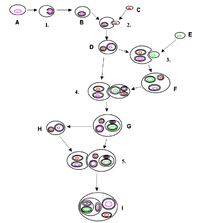
Photo from wikipedia
The pervasiveness of viral infectious agents, capable of parasitizing living organisms all along the evolutionary spectrum, has obligated hosts to evolve defense mechanisms that control viral infection. Elucidation of host–pathogen… Click to show full abstract
The pervasiveness of viral infectious agents, capable of parasitizing living organisms all along the evolutionary spectrum, has obligated hosts to evolve defense mechanisms that control viral infection. Elucidation of host–pathogen interactions in model organisms has been fundamen-tal to the translational understanding of human antiviral immunity. Lower organisms such as unicellular prokaryotes and eukaryotes have been shown to act as viral hosts and, in many cases, overcome infection via primitive immune mechanisms. The most widely studied example of this is the CRISPR/Cas system—a restriction mechanism in bacteria and archaea against highly specific viruses known as bacteriophages [1]. This seminal discovery has led to important advances in genetic engineering and has increased interest in viruses that infect unicellular organisms, notably those that are pathogenic to humans, and has led to an emerging role of viruses in this triangular host–pathogen interaction [2].
Journal Title: PLOS Pathogens
Year Published: 2022
Link to full text (if available)
Share on Social Media: Sign Up to like & get
recommendations!